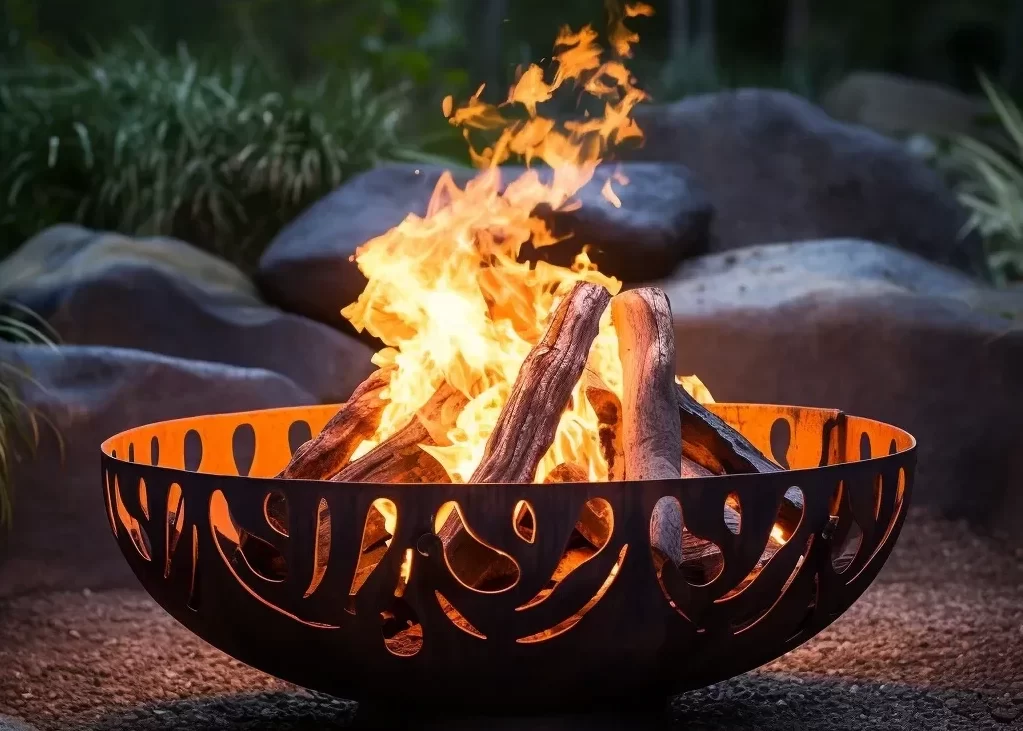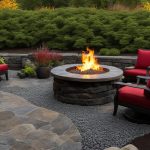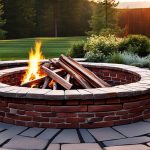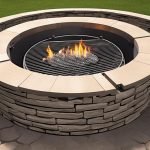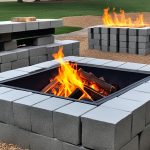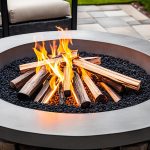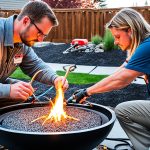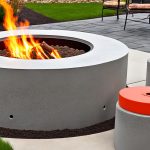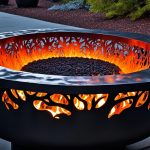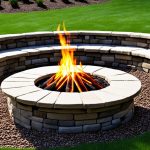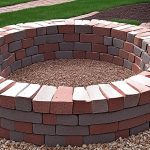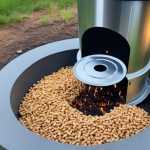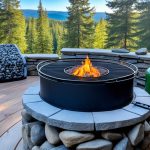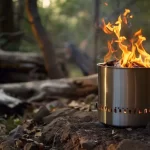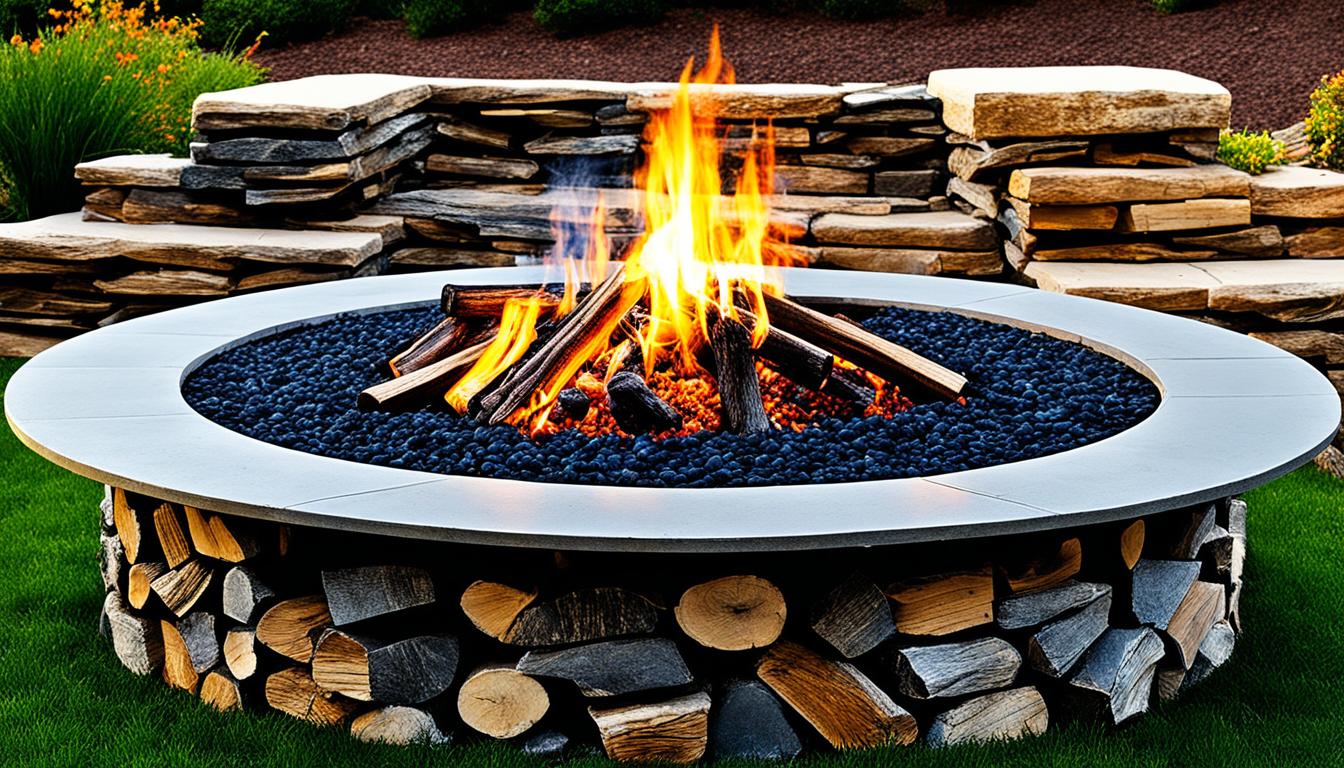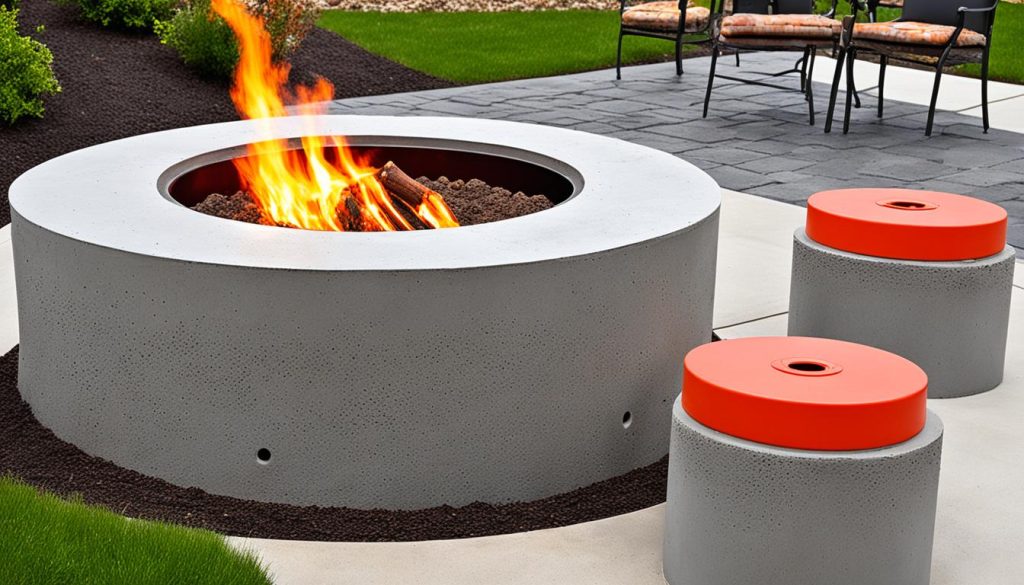
Fire pits are a popular addition to outdoor spaces, providing warmth and ambiance during chilly evenings. But did you know that concrete fire pits can pose a risk of explosions? Yes, you read that right. Concrete fire pits have the potential to explode if certain precautions are not taken.
So, how can you ensure the safety of your concrete fire pit? What are the best practices to prevent explosions and enjoy your outdoor fire pit without worry? In this article, we will explore fire pit safety tips and share essential information on preventing concrete fire pit explosions. Stay tuned to find out more!
Key Takeaways:
- Building a fire pit without approval from local authorities may result in fines, so check with your local government and homeowners’ association.
- Position your fire pit at least 15 feet away from other residences, 10 feet from property lines, and in an area with favorable winds.
- Avoid using flammable or non-porous materials in the construction of your fire pit to prevent explosions.
- Invest in fire safety gear such as a fire blanket and fire extinguisher.
- Regular maintenance, proper fire safety practices, and adherence to local regulations contribute to an enjoyable and safe outdoor experience.
Choosing the Right Gravel for Your Fire Pit Area
When it comes to creating a safe and visually appealing fire pit area, choosing the right gravel is essential. Gravel not only offers excellent drainage and stability but also provides versatility, aesthetics, cost-effectiveness, and easy maintenance. Here are some key considerations when selecting the perfect gravel for your fire pit:
- Crushed Limestone: Crushed limestone is a popular choice for fire pit areas due to its excellent drainage and compactness. However, it’s important to note that crushed limestone should not be used inside the fire pit itself. The high heat can cause explosive reactions, posing significant dangers.
- Pea Gravel: For a comfortable walking surface around the fire pit, pea gravel is a fantastic option. It provides a soft and smooth texture underfoot, enhancing the overall outdoor experience. Pea gravel can also be combined with crushed limestone to create a visually appealing fire pit area.
- Sharps: If stability is a priority, consider using sharp-edged gravel. Sharps offer exceptional stability and can be chosen in sizes ranging from 1/4″ to 3/8″. Their angular shape helps minimize shifting and movement, ensuring a secure foundation for your fire pit area.
Now that you have an idea of the different types of gravel to consider, let’s explore the steps involved in installing a gravel fire pit area:
- Preparation: Begin by clearing the area and removing any vegetation or debris. Ensure that the ground is level and well-compacted.
- Landscape Fabric: Lay down landscape fabric to prevent weed growth and promote proper drainage. This step helps maintain a clean and well-maintained fire pit area.
- Spreading the Gravel: Spread a layer of your chosen gravel evenly over the landscape fabric, ensuring sufficient coverage for the entire fire pit area.
- Leveling the Surface: Use a rake or shovel to level the surface of the gravel, achieving a smooth and uniform appearance. Pay attention to any uneven spots or low areas that may trap water.
- Optional Edging Installation: Installing edging around the perimeter of the fire pit area can provide a neat and defined boundary. This step is particularly beneficial if you want to prevent the gravel from spreading and maintain a tidy look.
Maintaining your gravel fire pit area is relatively straightforward. Regular maintenance involves sweeping or raking the gravel to remove debris and keeping an eye out for any gaps or loss of gravel. Fill in any gaps as needed to ensure a consistently even surface.
Lastly, remember to prioritize safety when designing and using your fire pit area. Proper fire pit placement, including maintaining a safe distance from flammable structures and guidelines for fire pit containment, is crucial. Adhere to fire safety practices and regulations set by your local authorities to avoid fire pit accidents and ensure a safe outdoor environment for everyone.
Conclusion
Fire pit safety is of utmost importance to ensure a pleasant and secure outdoor experience while preventing concrete fire pits from exploding. By following these fire pit safety tips, you can minimize the risk of accidents and enjoy your fire pit with peace of mind.
To start, it is essential to obtain the necessary approvals from local authorities and homeowners’ associations before constructing a fire pit. This step will help you avoid potential fines and ensure that your fire pit meets all safety regulations.
Additionally, consider factors such as accessibility and hazard-free zones when positioning your fire pit. Maintaining a distance of at least 15 feet from other residences and 10 feet from property lines is crucial to prevent the spread of fire. Also, be mindful of the area’s wind patterns to prevent smoke and embers from affecting neighboring properties.
Choosing appropriate materials for your fire pit construction is another critical aspect of safety. Avoid using flammable or non-porous materials that can contribute to explosions. Installing a steel ring within the fire pit helps maintain its structural integrity and prevents the walls from drying out and crumbling over time.
Lastly, regularly maintaining your fire pit and implementing proper fire safety practices will greatly contribute to a safe and enjoyable experience. Ensure that your fire is never left unattended and invest in essential fire safety gear, such as a fire blanket and fire extinguisher.
By following these fire pit safety tips, you can prevent concrete fire pit explosions, promote fire pit safety, and create lasting memories around the warm glow of a fire with your loved ones.
Recommended
- Buy Solo Stove: Find Your the Best Retailer Online
- Master How to Use Solo Stove – Tips & Tricks
- Understanding How Solo Stove Works | Eco-Friendly Tech

Otis, 52, embodies a lifetime of adventure, from the rugged hills of the USA to serene camping spots worldwide. His passion for the outdoors isn’t just a hobby; it’s a way of life that includes hiking, camping, and exploring the unknown. With decades of experiences under his belt, Otis shares his adventures and lessons learned through Natural Fire Pit. Beyond fire pits, his expertise in outdoor living, from setting up the perfect tent to finding off-the-beaten-path travel destinations, guides fellow enthusiasts. Follow Otis’s journey for a deeper connection with nature.
